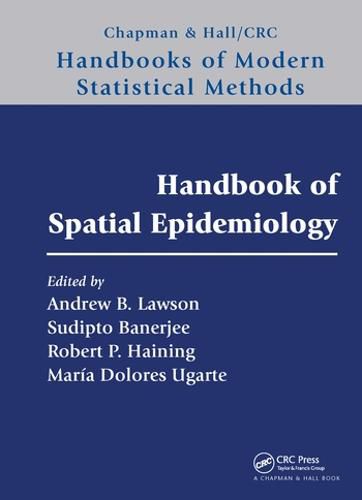Readings Newsletter
Become a Readings Member to make your shopping experience even easier.
Sign in or sign up for free!
You’re not far away from qualifying for FREE standard shipping within Australia
You’ve qualified for FREE standard shipping within Australia
The cart is loading…






Handbook of Spatial Epidemiology explains how to model epidemiological problems and improve inference about disease etiology from a geographical perspective. Top epidemiologists, geographers, and statisticians share interdisciplinary viewpoints on analyzing spatial data and space-time variations in disease incidences. These analyses can provide important information that leads to better decision making in public health.
The first part of the book addresses general issues related to epidemiology, GIS, environmental studies, clustering, and ecological analysis. The second part presents basic statistical methods used in spatial epidemiology, including fundamental likelihood principles, Bayesian methods, and testing and nonparametric approaches. With a focus on special methods, the third part describes geostatistical models, splines, quantile regression, focused clustering, mixtures, multivariate methods, and much more. The final part examines special problems and application areas, such as residential history analysis, segregation, health services research, health surveys, infectious disease, veterinary topics, and health surveillance and clustering.
Spatial epidemiology, also known as disease mapping, studies the geographical or spatial distribution of health outcomes. This handbook offers a wide-ranging overview of state-of-the-art approaches to determine the relationships between health and various risk factors, empowering researchers and policy makers to tackle public health problems.
$9.00 standard shipping within Australia
FREE standard shipping within Australia for orders over $100.00
Express & International shipping calculated at checkout
Handbook of Spatial Epidemiology explains how to model epidemiological problems and improve inference about disease etiology from a geographical perspective. Top epidemiologists, geographers, and statisticians share interdisciplinary viewpoints on analyzing spatial data and space-time variations in disease incidences. These analyses can provide important information that leads to better decision making in public health.
The first part of the book addresses general issues related to epidemiology, GIS, environmental studies, clustering, and ecological analysis. The second part presents basic statistical methods used in spatial epidemiology, including fundamental likelihood principles, Bayesian methods, and testing and nonparametric approaches. With a focus on special methods, the third part describes geostatistical models, splines, quantile regression, focused clustering, mixtures, multivariate methods, and much more. The final part examines special problems and application areas, such as residential history analysis, segregation, health services research, health surveys, infectious disease, veterinary topics, and health surveillance and clustering.
Spatial epidemiology, also known as disease mapping, studies the geographical or spatial distribution of health outcomes. This handbook offers a wide-ranging overview of state-of-the-art approaches to determine the relationships between health and various risk factors, empowering researchers and policy makers to tackle public health problems.